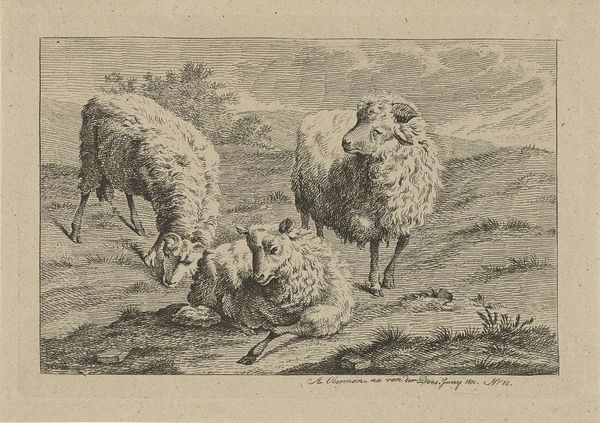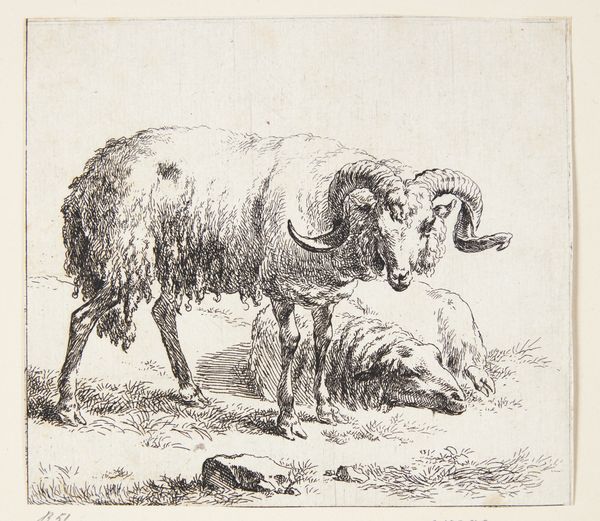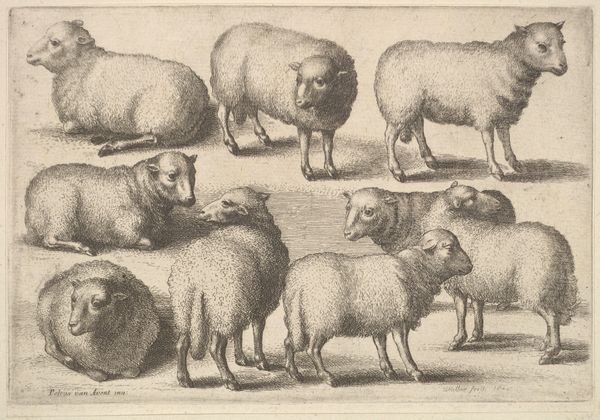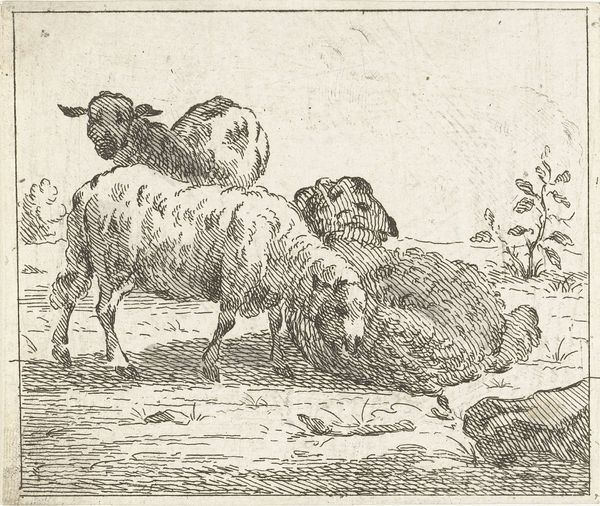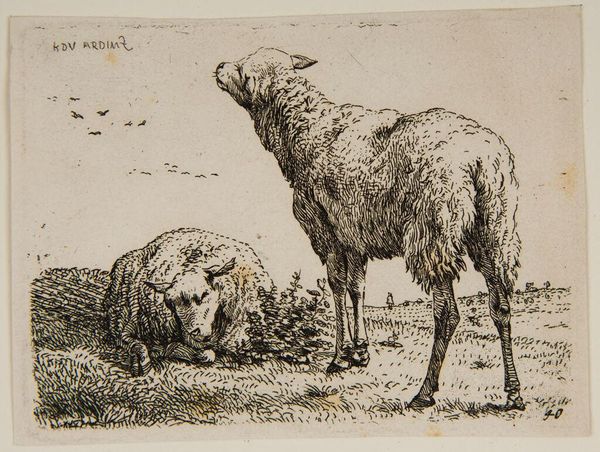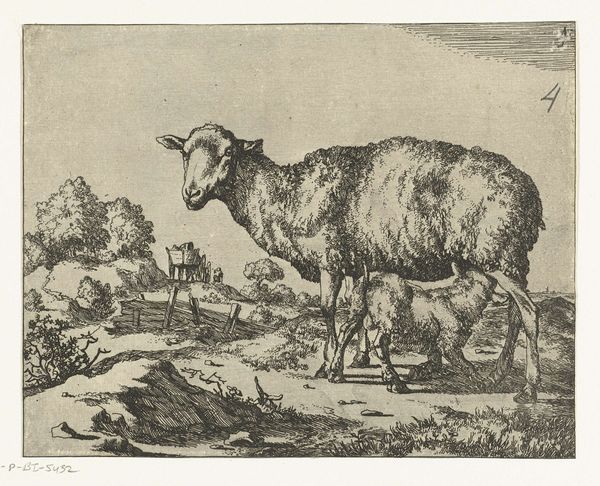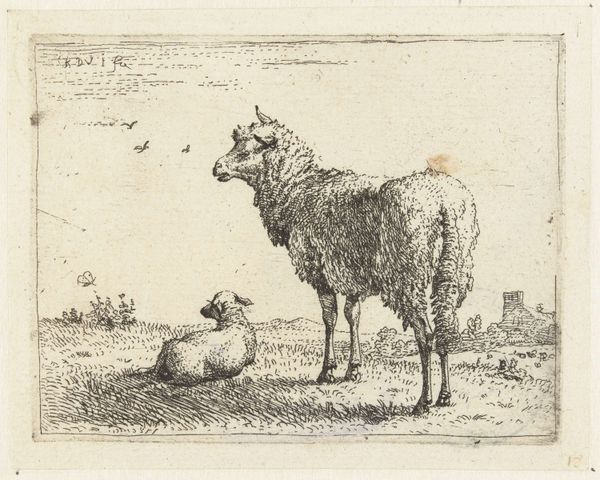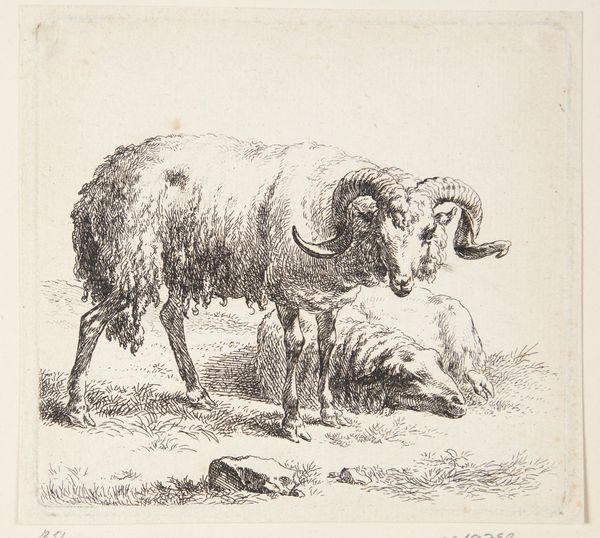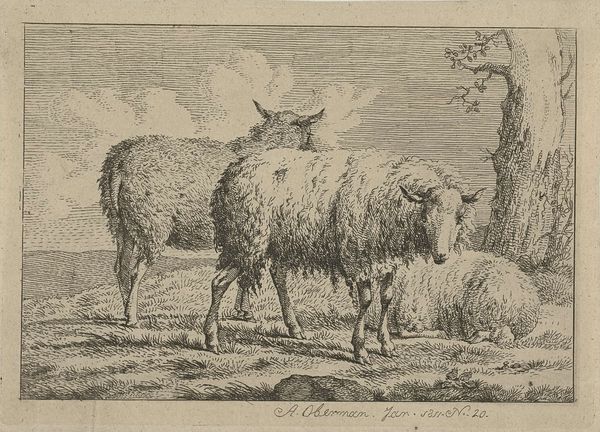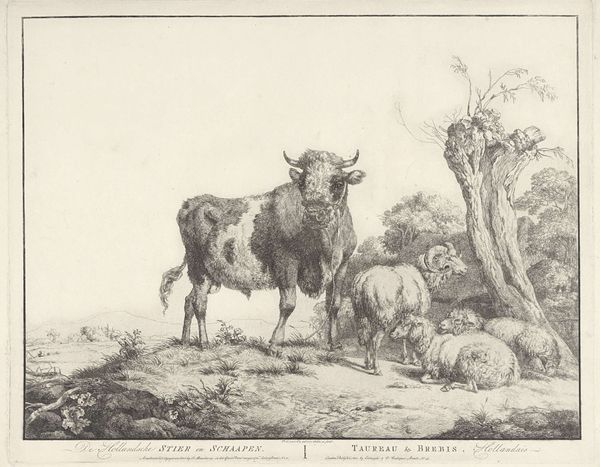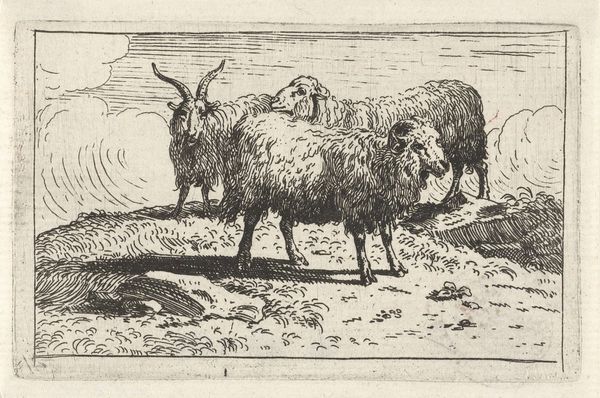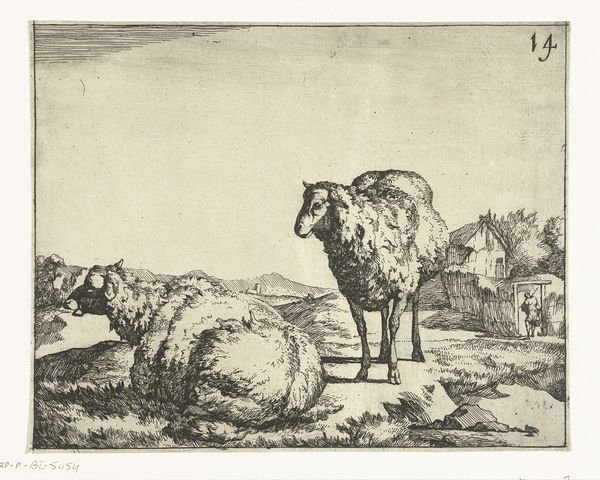
drawing, print, etching
#
drawing
#
ink drawing
# print
#
etching
#
landscape
#
figuration
Dimensions: 106 mm (height) x 161 mm (width) (bladmaal)
Curator: Before us we have "Får," an etching by Jan van den Hecke I, likely created sometime between 1619 and 1684. It depicts a small group of sheep in a pastoral setting. Editor: My initial impression is one of bucolic tranquility. There's a definite calm radiating from the composition; the sheep seem completely at ease. The contrast between the ram on the left and the other sheep is remarkable, highlighting its distinctive wool. Curator: Indeed, the artist's careful manipulation of the etching process is clear here. The different textures achieved, particularly in the varying wool qualities, are testament to a mastery of the printmaking craft. Notice the varying application of the mordant and how it creates tonal range within the etching. He’s not merely depicting sheep, but conveying their materiality. Editor: For me, the ram, set apart with its darker wool and upright posture, takes on a symbolic weight. Perhaps representing leadership or watchfulness, contrasting the more passive nature of the flock. It evokes a strong association to traditional pastoral allegories. What are your thoughts on the presence and impact of these sheep, considered from that angle? Curator: Allegories are always produced under specific historical and material circumstances. The production of wool and the historical demand in local economies around these sheep is vital for assessing van den Hecke’s decisions. These materials tie back into issues of labour and economy. The symbolism becomes embedded into something tangible when you explore what can be exchanged or purchased with the yield that is represented by these creatures. Editor: That's a valid point; I agree the image's creation and reception would certainly be interwoven with socio-economic realities related to sheep farming. However, even acknowledging that connection, I can't disregard how the imagery invokes such well-established themes. It feels deeply rooted in the human connection to the land and our historical interpretations of the pastoral idyll. Curator: It’s important not to over-romanticize. Consider the ecological implications and labor involved in maintaining landscapes suitable for sheep grazing. The “idyllic” nature is underpinned by human intervention and a specific set of land management practices. How the land becomes an extension of the productive processes. Editor: That tension between our idealised view of nature and the reality of human impact is compellingly brought to light through the work itself. It's fascinating how a simple depiction can spark such a layered discussion. Curator: Indeed. It shows how exploring both material realities and the symbolic depth that artworks hold, as it relates to the conditions in which their consumption is influenced by and impacts, can enrich the whole viewing experience.
Comments
No comments
Be the first to comment and join the conversation on the ultimate creative platform.
